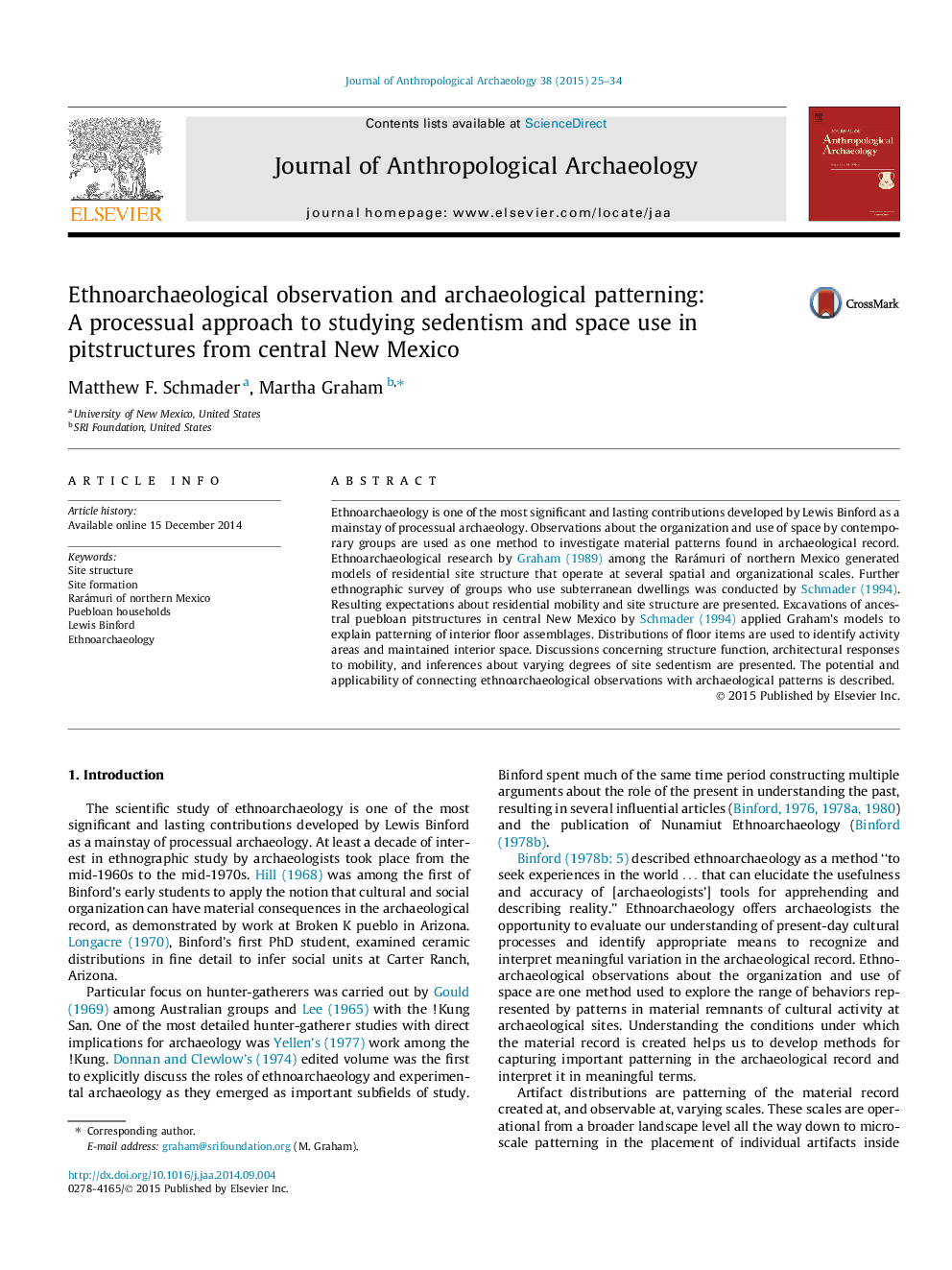| Article ID | Journal | Published Year | Pages | File Type |
|---|---|---|---|---|
| 1034907 | Journal of Anthropological Archaeology | 2015 | 10 Pages |
Ethnoarchaeology is one of the most significant and lasting contributions developed by Lewis Binford as a mainstay of processual archaeology. Observations about the organization and use of space by contemporary groups are used as one method to investigate material patterns found in archaeological record. Ethnoarchaeological research by Graham (1989) among the Rarámuri of northern Mexico generated models of residential site structure that operate at several spatial and organizational scales. Further ethnographic survey of groups who use subterranean dwellings was conducted by Schmader (1994). Resulting expectations about residential mobility and site structure are presented. Excavations of ancestral puebloan pitstructures in central New Mexico by Schmader (1994) applied Graham’s models to explain patterning of interior floor assemblages. Distributions of floor items are used to identify activity areas and maintained interior space. Discussions concerning structure function, architectural responses to mobility, and inferences about varying degrees of site sedentism are presented. The potential and applicability of connecting ethnoarchaeological observations with archaeological patterns is described.
